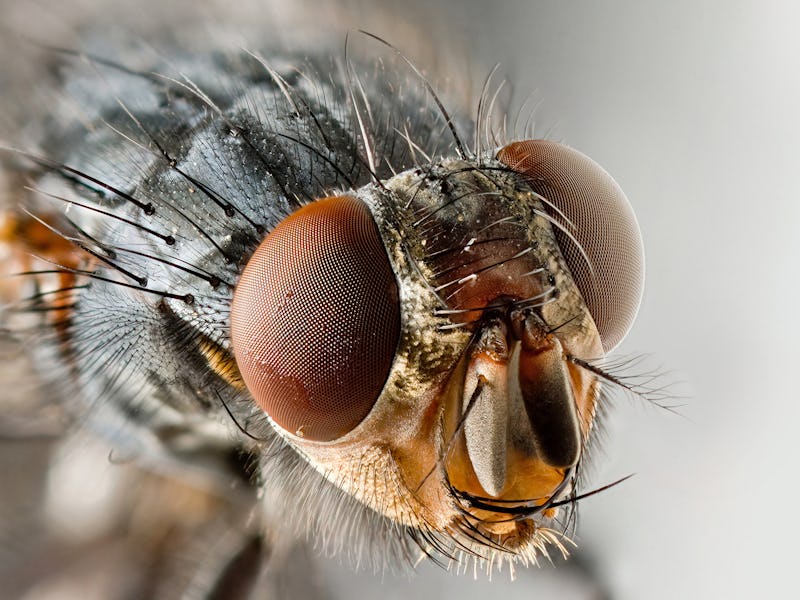How Insect Vision Makes Drones Fly Better
Fly like a house fly, sting like a predator.

Though the vision systems of insects are typically seen as more complex compared to those of modern day mammals, robotics engineers are looking at bug eyes as an inspiration for developing better navigation systems for autonomous drones. So some Swiss researchers have designed an artificial eye based on insect vision, and it could be a major key in helping smaller drones navigate through tight, narrow spaces.
Miniature drones have a tremendous potential for being used in covert surveillance or for observing cluttered spaces too small or dangerous for humans or bigger drones. Unfortunately, it’s still quite difficult to make sure autonomous drones will avoid colliding with other walls or objects.
In nature, insect eyes are tiny and have a low spatial resolution, but they provide a high degree of sensitivity to sudden changes or movements in the bug’s field of view. They can’t see very far or clearly, but they are super-fast in observing changes right in front of them — and it’s partially why you’re never able to swat that damn fly buzzing around you.
The Swiss researchers, based at the Swiss Federal Institute of Technology in Zurich, developed a new sensor based on this principles that’s able to detect speed and direction of motion in its view. It only weighs two milligrams and takes up two cubic millimeters — yet can detect movements three times faster than flying insects, under a wide range of light conditions.
Of course, using the new sensor requires a re-jiggering of the whole suite of other actions drones need to be able to do, such as taking off, landing, and mid-flight stabilization. But if the researchers are able to accomplish that, the new eyes can help usher in a whole new class of mini drones. The next time you swat at that annoying fly, make sure it isn’t, in reality, thousands of dollars worth of spy equipment.